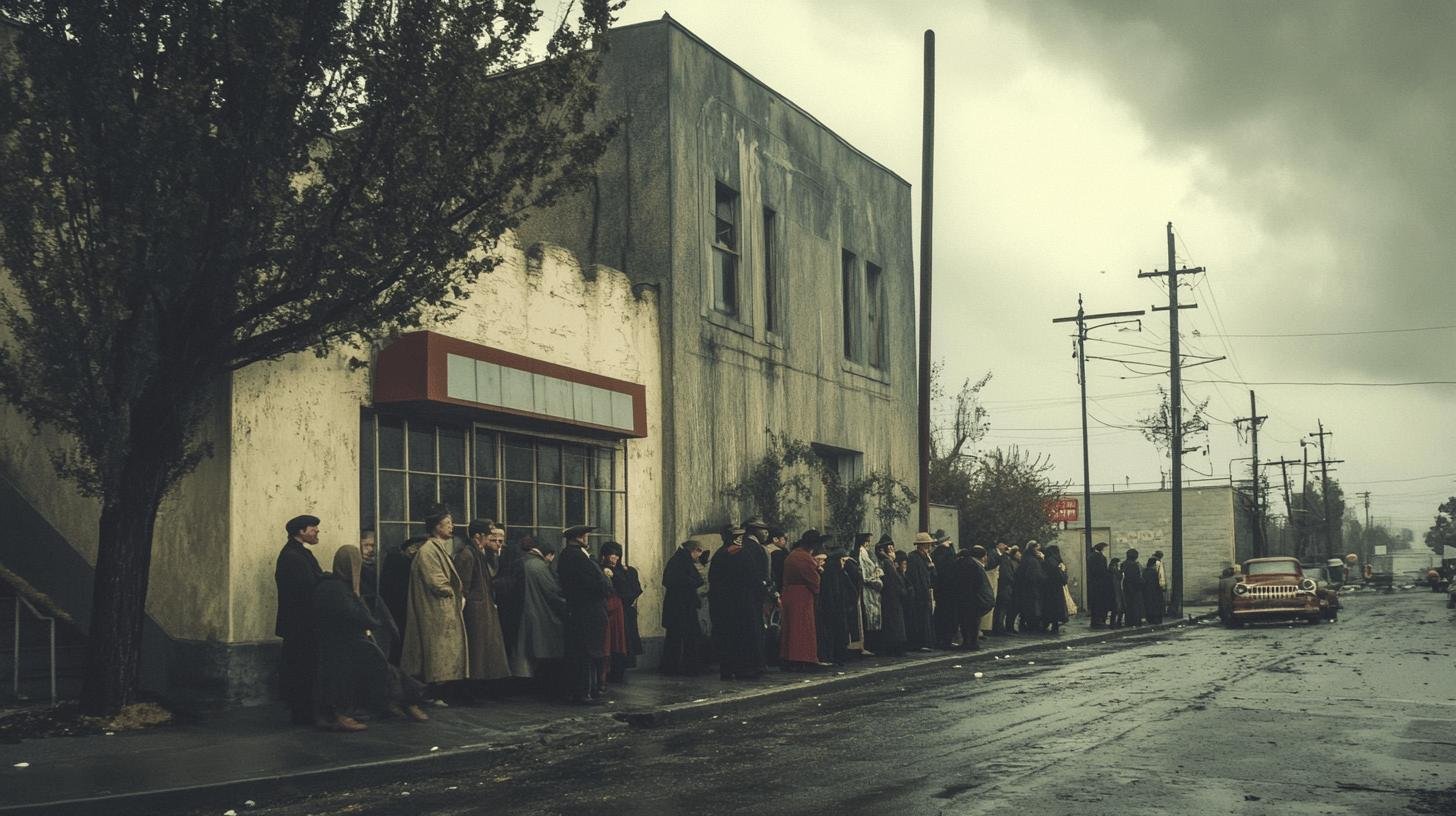TL;DR:
- Laissez-faire economics’ role in American history demonstrates how minimal government intervention in markets shaped the nation’s economic development, particularly during the industrial revolution and Gilded Age.
- Key figure: Adam Smith; known for “invisible hand” concept in “The Wealth of Nations.”
- Historical context: Gained traction in the late 18th-early 19th century during industrialization.
- Principles: Minimal government interference, individual liberty, market self-regulation.
- American industrialization: Thrived in the late 19th century Gilded Age with figures like Carnegie and Rockefeller; led to rapid growth but also economic disparities.
- Criticisms: Economic inequality, lack of labor rights, unchecked corporate power.
- Great Depression: Shifted focus to increased government intervention, exemplified by the New Deal policies.
- Modern relevance: Ongoing debates about deregulation, tax policy, and environmental regulation.
Laissez-faire economics’ role in American history reveals a fascinating story of freedom and consequences in our nation’s development. Like a massive experiment in economic liberty, this hands-off approach to government regulation shaped everything from small businesses to giant industrial empires. Imagine a time when business owners could make decisions without government oversight – that’s what America experienced during crucial periods of its growth.
This French phrase, meaning “let do” or “let it be,” transformed into a powerful force that built railroads, factories, and fortunes. Through the stories of famous industrialists like Andrew Carnegie and John D. Rockefeller, we can see how this economic philosophy led to both incredible innovation and serious problems.
Laissez-Faire Economics: Foundations and Philosophical Roots
Laissez-faire economics is a key part of classical economics. It promotes minimal government intervention, trusting markets to manage themselves and allocate resources effectively.
Adam Smith is crucial in this field. Known for “The Wealth of Nations,” he introduced the “invisible hand” concept. This suggests that individual self-interest can unintentionally benefit society by guiding resources to optimal uses.
These ideas gained traction in the late 18th and early 19th centuries during industrialization and capitalism’s rise. The belief was that reducing government interference would let markets thrive, encouraging innovation and growth.
What are the key principles of laissez-faire economics?
- Minimal government interference
- Individual liberty
- Market self-regulation
These principles uphold personal freedom in economic activities and trust in the market’s self-adjustment capabilities.
Laissez-faire economics has greatly influenced American history, especially when free-market capitalism was prioritized. Its foundational ideas still shape economic policy debates, underscoring the balance between regulation and economic freedom.
Laissez Faire Economics’ Role in American History: Industrial Era

In the late 19th century, during the Gilded Age, laissez-faire principles were vital to America’s industrial boom. Industries like steel, railroads, and oil grew rapidly due to minimal government interference. Entrepreneurs thrived in this mostly unregulated market.
Figures like Andrew Carnegie and John D. Rockefeller epitomized laissez-faire ideals. Carnegie’s steel empire and Rockefeller’s oil monopoly expanded by leveraging the lack of regulation, showcasing both the successes and pitfalls of this economic approach.
With limited oversight, industries innovated and expanded swiftly. Entrepreneurs could explore and grow without bureaucratic obstacles, leading to unprecedented economic growth and dominance in key sectors.
While this economic approach fueled industrialization, it also led to challenges like economic disparities and monopolistic practices. This period is marked by both impressive economic achievements and the need for regulation to address excesses.
Criticisms and Consequences of Laissez-Faire Policies
This approach is criticized for causing economic inequality, fostering monopolies, and resulting in poor working conditions.
Minimal regulation led to wealth concentration among industrialists like Carnegie and Rockefeller, leaving many workers with low wages and unsafe environments. Monopolies like Standard Oil thrived, setting prices and stifling competition without regulation, causing public dissatisfaction.
Lack of labor laws resulted in poor working conditions, promoting long hours and unsafe environments, which fueled labor movements and reform demands.
Public outcry led to reforms like the Sherman Antitrust Act of 1890, aimed at curbing monopolistic practices and promoting fair competition. This marked a shift towards increased government intervention.
Key criticisms of laissez-faire economics:
- Economic inequality
- Lack of labor rights
- Unchecked corporate power
These highlight the need for regulation to protect workers and ensure fair markets, paving the way for more balanced economic policies.
The Great Depression and the Shift Away From Laissez-Faire

How did the Great Depression affect laissez-faire economics? The economic crisis exposed the flaws of minimal regulation, prompting a shift towards more government intervention.
Widespread hardships like rising unemployment, bank failures, and business collapses highlighted the inadequacies of the laissez-faire system. There was a clear need for government action to stabilize the economy.
What was the government’s response? The New Deal marked a significant policy shift, introducing active government involvement. Franklin D. Roosevelt’s policies aimed to provide relief, reform financial systems, and boost economic recovery. This approach contrasted with laissez-faire principles, highlighting the role of government in regulation and social welfare.
New Deal Policies
What were key New Deal policies? Initiatives like the Social Security Act, the Securities and Exchange Commission (SEC), and the Civilian Conservation Corps (CCC) were crucial.
- Social Security Act: Established support for the elderly and unemployed, highlighting a move towards social welfare.
- Securities and Exchange Commission (SEC): Regulated the stock market to prevent future crises.
- Civilian Conservation Corps (CCC): Created jobs for young men, reducing unemployment and enhancing public lands.
These policies moved away from laissez-faire ideals, aiming to stabilize the economy and protect citizens. The New Deal set a precedent for government intervention, redefining its role in the economy.
Laissez-Faire Economics in Modern American Policy Debates
How does laissez-faire economics influence modern American policy? It plays a central role in discussions about deregulation and economic freedom.
Laissez-faire emphasizes minimal government intervention, letting the market decide outcomes, often contrasted with interventionist policies favoring state oversight.
What are key areas where laissez-faire principles appear today?
- Business deregulation: Advocates argue fewer restrictions promote innovation by reducing bureaucratic hurdles. Critics warn excessive deregulation can lead to misconduct and inequality.
- Tax policy: Supporters prefer lower taxes, especially for corporations and the wealthy, believing it spurs investment. Opponents argue it can increase inequality and reduce public services.
- Environmental regulation: Proponents favor less regulation to cut business costs and boost growth, often clashing with environmental preservation efforts.
The ongoing debates highlight the tension between economic freedom and government oversight to protect societal interests, showing laissez-faire’s enduring influence on America’s economic landscape.
Final Words
Laissez-faire economics’ role in American history shows us both the power and problems of unrestricted markets. This approach helped America grow into an industrial giant, creating unprecedented wealth and innovation. However, it also led to serious issues like worker exploitation and economic inequality. The Great Depression changed many minds about completely free markets, leading to new regulations and government programs. Today, we’re still debating how much freedom businesses should have versus how much government oversight we need. By understanding this history, we can make better choices about balancing economic freedom with protecting people’s wellbeing.
FAQ
How did laissez-faire economics’ role in American history shape the nation’s development?
Laissez-faire economics allowed rapid industrial growth in the late 1800s by minimizing government interference, leading to both economic expansion and social challenges that still influence American policy today.
What caused the decline of laissez-faire policies in America?
The Great Depression of the 1930s exposed the weaknesses of unrestricted markets, leading to New Deal programs and increased government oversight of the economy.
How did major industrialists benefit from laissez-faire policies?
Business leaders like Rockefeller and Carnegie built massive corporations and personal fortunes due to minimal government regulation and oversight of their business practices.
What were the main problems with laissez-faire economics?
The major issues included worker exploitation, unsafe working conditions, the formation of monopolies, and growing economic inequality between the wealthy and poor.
How does laissez-faire thinking influence modern economic debates?
Today’s discussions about regulation, taxation, and government involvement in business still reflect the tension between complete economic freedom and the need for oversight.

